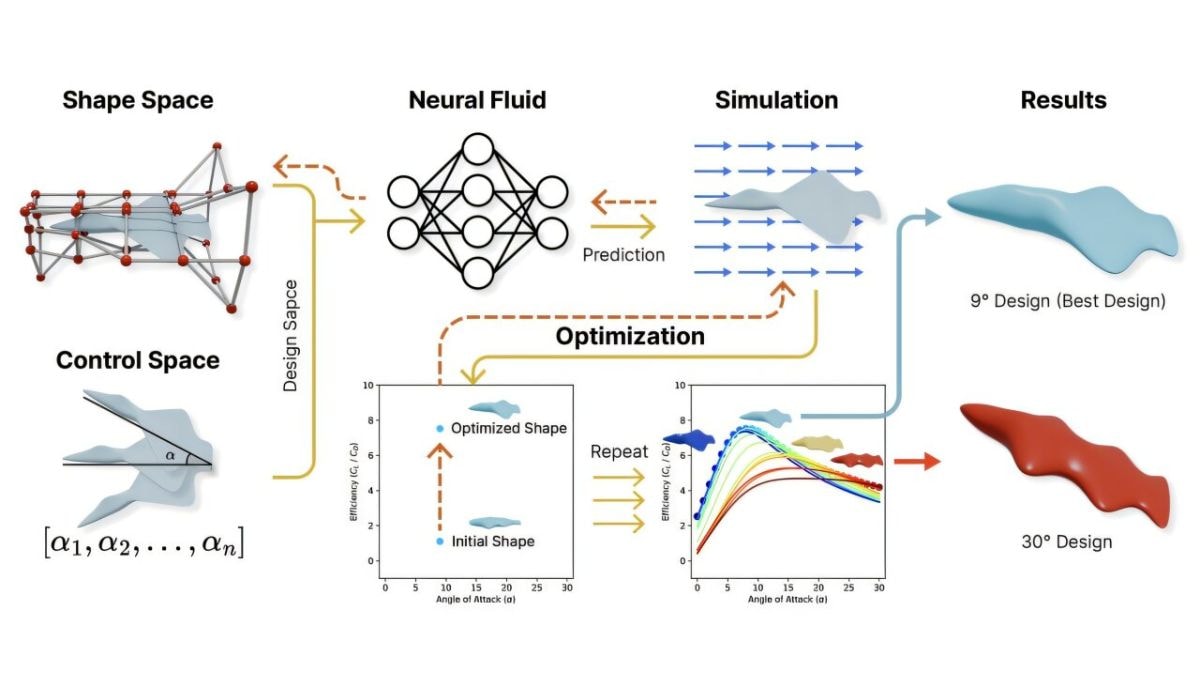Marine animals like fish and seals have long inspired ocean engineers due to their fluid, energy-efficient movements. Now, researchers are turning to these sea animals to create a new class of underwater gliders that requires very little energy, according to a team led by researchers from MIT’s Computer Science and Artificial Intelligence Laboratory (CSAIL) and the University of Wisconsin-Madison. They used artificial intelligence to design forms that slide through the water with less resistance, making long-term ocean exploration more efficient. These gliders, fabricated via 3D printing, promise better data collection on currents, salt levels, and climate impacts.
AI-Powered 3D Designs Create Energy-Efficient Underwater Gliders Inspired by Marine Life Forms
As per a study published on the arXiv preprint server, the team used machine learning to create and simulate numerous novel 3D glider shapes. By comparing traditional models—like submarines and sharks—with digitally altered versions, their algorithm learnt how different designs behaved at various “angles-of-attack.” A neural network then evaluated the lift-to-drag ratio of each shape, identifying those most likely to glide efficiently through water. These shapes were then fabricated using lightweight materials that minimised energy use.
In tests, two AI-generated prototypes—one shaped like a two-winged plane and the other like a four-finned flatfish—were built and tested both in wind tunnels and underwater. Key hardware was integrated with the gliders, including buoyancy control by a pump and a mass shifter to move the angle during displacements. The new gliders, with better shapes and lift-to-drag ratios, could travel farther on less power than traditional torpedo-shaped types.
The team added that what they are doing not only makes new types of designs possible but also reduces design times and cuts the cost since it doesn’t require physical prototyping. “This high degree of shape diversity hasn’t been investigated before,” Peter Yichen Chen, an MIT postdoc and co-lead author on the project, mentioned. He also noted that their AI pipeline allows testing forms that would be “very taxing” for humans to manually design.
The future plans are to produce slimmer and more manoeuvrable gliders and to improve the AI system with more configurable options. Intelligent bioinspired vehicles like these, the researchers say, will be essential in studying dynamic ocean environments that are changing quickly with the intensifying demands of industrial activity, ultimately offering more flexible and efficient ways for us to explore Earth’s last frontier.
For the latest tech news and reviews, follow Gadgets 360 on X, Facebook, WhatsApp, Threads and Google News. For the latest videos on gadgets and tech, subscribe to our YouTube channel. If you want to know everything about top influencers, follow our in-house Who’sThat360 on Instagram and YouTube.
Hubble Observations Give Forgotten Globular Cluster Its Moment to Shine
Narivetta OTT Release Date: When and Where to Watch Tovino Thomas Starrer Political Drama Online?

